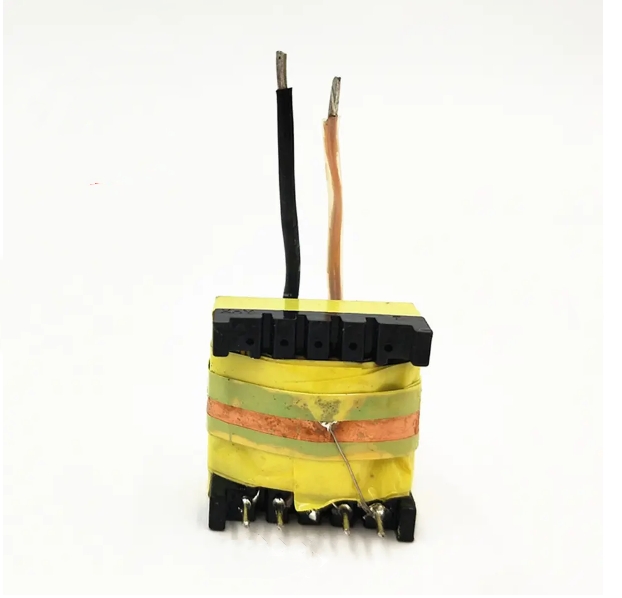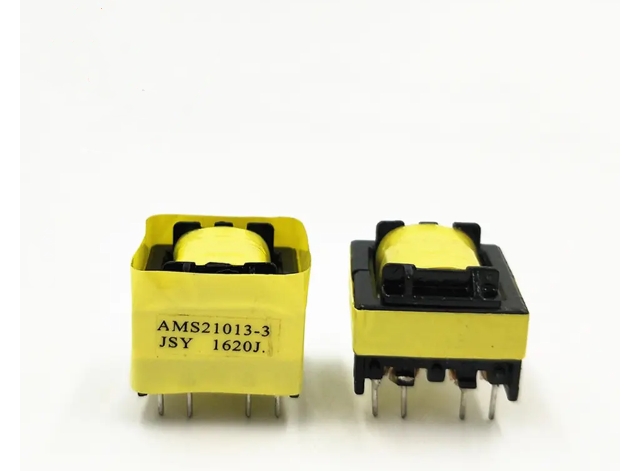Many electronic devices use high-frequency transformers to convert electrical power between voltage levels. However, when an electromagnetic field is applied to these transformers, magnetic bias can occur. A magnetic bias can cause a variety of problems, including reduced efficiency, increased heat generation, and even permanent damage. Protect your devices from these issues by understanding how to identify magnetic bias in high-frequency transformers.
In this blog, we’ll provide a comprehensive guide on how to identify magnetic bias in high-frequency transformers and protect your devices. We’ll cover the definition of magnetic bias, the symptoms to look out for, and the tools and techniques required to identify it. Additionally, we’ll offer practical tips and best practices for preventing magnetic bias from occurring in the first place. We’ll also offer solutions for protecting your devices from its effects. By the end of this blog, you’ll have a solid understanding of magnetic bias and how to keep your high-frequency transformers functioning properly.
What is magnetic bias, and how does it affect high-frequency transformers?
Magnetic bias is a phenomenon that occurs in high-frequency transformers when an external magnetic field is applied to the transformer’s magnetic core. When this happens, the magnetic core can become partially saturated, causing an imbalance in the magnetic flux within the core.
This imbalance can have several negative effects on the transformer’s performance. For example, magnetic bias can lead to increased core losses, reduced efficiency, and increased heat generation. In some cases, magnetic bias can even cause permanent damage to the transformer, leading to reduced lifespan or complete failure.
Additionally, magnetic bias can affect the accuracy of any sensing components within the transformer, such as current or voltage sensors, which can lead to incorrect readings or malfunctioning of the sensing equipment.
What are the symptoms of magnetic bias, and how can I recognize them?
Magnetic bias symptoms in high-frequency transformers can vary depending on the severity of the issue. Here are some common signs that you can look out for to recognize magnetic bias:
- Increased heat generation: Magnetic bias can cause the transformer to generate more heat than usual. If you notice that your transformer is getting hotter than usual, it could be a sign of magnetic bias.
- Reduced efficiency: Magnetic bias can lead to increased core losses and reduced transformer efficiency. You may notice that the transformer is not performing as well as it should, or that it is consuming more power than usual.
- Distorted waveforms: Magnetic bias can cause distortion in the transformer’s output waveform, which can affect the accuracy of any sensing components connected to the transformer. If you notice distorted waveforms or incorrect readings from sensing equipment, it could be a sign of magnetic bias.
- Noise or vibration: Magnetic bias can cause noise or vibration. If you notice any unusual sounds or vibrations coming from the transformer, it’s worth investigating to see if magnetic bias could be the cause.
- Permanent damage: In severe cases, magnetic bias can cause permanent damage to the transformer. This can lead to reduced lifespan or complete failure.
If you notice any of these symptoms in your high-frequency transformer, it’s essential to take action to address the issue and protect your devices.
What causes magnetic bias in high-frequency transformers?
Magnetic bias in high-frequency transformers is typically caused by an external magnetic field. This field can come from a variety of sources, including nearby electrical equipment, power lines, or other transformers.
When an external magnetic field is applied to the transformer’s magnetic core, it can cause the core to become partially saturated, leading to an imbalance in the magnetic flux within the core. This imbalance can then lead to the symptoms of magnetic bias, such as increased heat generation and reduced efficiency.
Additionally, factors such as the transformer design and construction can also contribute to magnetic bias. For example, transformers with larger cores or those with poorly designed shielding may be more susceptible to magnetic bias than others.
How can I measure magnetic bias in my transformers?
Measuring magnetic bias in high-frequency transformers requires specialized equipment and techniques. Here are some common methods to measure magnetic bias:
- Fluxgate magnetometer: A fluxgate magnetometer is a sensitive instrument that can measure small changes in magnetic fields. It can be used to detect and measure magnetic bias in a transformer.
- Magnetic field probe: A magnetic field probe is a device that can measure the strength and direction of magnetic fields. It can be used to detect the presence of an external magnetic field that may be causing magnetic bias in the transformer.
- Frequency response analysis (FRA): FRA is a technique that involves measuring the frequency response of a transformer to an input signal. It can be used to detect changes in the transformer’s magnetic properties, which can indicate the presence of magnetic bias.
- Inductance measurement: Inductance measurement involves measuring the inductance of the transformer’s winding at different frequencies. Changes in the inductance of the transformer can be an indication of magnetic bias.
It’s worth noting that measuring magnetic bias in high-frequency transformers can be a complex and technical process that requires specialized knowledge and equipment. If you suspect that your transformer may be experiencing magnetic bias, it’s essential to consult with an experienced engineer or technician who can help you identify and address the issue.
What are the best ways to prevent magnetic bias from occurring in my transformers?
Preventing magnetic bias in high-frequency transformers involves several measures that can be taken during the design, installation, and operation of the transformer. Here are some of the best ways to prevent magnetic bias:
- Proper grounding: Ensure that the transformer is properly grounded and that all electrical equipment in the vicinity is grounded to prevent the buildup of external magnetic fields.
- Shielding: Use proper shielding to protect the transformer from external magnetic fields. Shielding can include the use of materials like mu-metal, which is specifically designed to reduce the effects of magnetic fields.
- Proper installation: Install the transformer in an area with minimal electromagnetic interference. Avoid installing the transformer near sources of magnetic fields such as power lines, motors, or other transformers.
- Proper design: Design the transformer with proper shielding, and take into account the operating environment and potential sources of external magnetic fields.
- Regular maintenance: Perform regular maintenance on the transformer, including testing for magnetic bias and addressing any issues promptly.
- Magnetic bias compensation: Use magnetic bias compensation techniques, such as designing the transformer with an air gap or incorporating a bias magnet, to counteract magnetic bias.

Can magnetic bias cause permanent damage to my devices, and if so, how can I protect them?
Yes, magnetic bias can damage your devices if left unaddressed. Here are some ways magnetic bias can cause permanent damage:
Overheating: Magnetic bias can cause a transformer to generate excess heat, which can damage the winding insulation and other components of the transformer. This can lead to permanent damage and potentially cause a safety hazard.
Reduced efficiency: Magnetic bias can reduce the efficiency of a transformer, leading to increased power consumption and reduced performance. Over time, this can cause wear and tear on the transformer’s components, potentially leading to permanent damage.
To protect your devices from the negative effects of magnetic bias, here are some steps you can take:
- Regular testing: Regularly test your transformer for magnetic bias to catch any issues early and prevent them from causing permanent damage.
- Use magnetic shielding: Use magnetic shielding, such as mu-metal or other materials, to protect your transformer from external magnetic fields that may cause magnetic bias.
- Use a bias magnet: Incorporate a bias magnet into your transformer’s design to help counteract the effects of magnetic bias.
- Proper maintenance: Proper maintenance, including cleaning and regular inspection, can help ensure that your transformer is operating correctly and reduce the risk of permanent damage caused by magnetic bias.
By taking these steps, you can help protect your devices from the negative effects of magnetic bias and ensure the longevity and performance of your high-frequency transformers.
Is it possible to fix magnetic bias in high-frequency transformers once it has occurred, or do I need to replace the transformer?
Magnetic bias in high-frequency transformers can occur due to a variety of reasons such as thermal stresses, mechanical stresses, and exposure to high magnetic fields. Once magnetic bias has occurred, it can be challenging to fix, and in some cases, replacement of the transformer may be necessary.
However, there are a few techniques that can be used to mitigate magnetic bias in high-frequency transformers. One common technique is to apply a reverse DC current to the transformer for a short period. This process, known as demagnetization, can help reduce the residual magnetic field in the transformer’s core and can sometimes restore its performance.
Another technique involves changing the transformer’s winding configuration or using an additional winding to provide a counteracting magnetic field. This approach is called degaussing and can also help reduce magnetic bias.
It’s important to note that the effectiveness of these techniques depends on the severity of the magnetic bias and the specific characteristics of the transformer. In some cases, replacement may still be necessary, especially if the transformer’s performance is significantly degraded.
Therefore, it’s recommended to consult with a qualified electrical engineer or technician to assess the severity of the magnetic bias and determine the best course of action.
Are there any other types of bias that can affect high-frequency transformers, and how can I differentiate between them?
Yes, there are other types of bias that can affect high-frequency transformers. Some of the most common types of bias include DC bias, AC bias, and thermal bias. Here’s how you can differentiate between them:
DC Bias: DC bias is caused by the presence of a direct current in the transformer’s windings. This type of bias can cause a magnetic field to be present in the core, even when there is no AC voltage applied. DC bias can be caused by various factors such as a DC offset in the power source, an imbalance in the transformer’s windings, or a fault in the core. To diagnose DC bias, you can measure the DC resistance of the transformer’s windings and look for any imbalances.
AC Bias: AC bias is caused by the presence of a high-frequency AC voltage that is not centered around zero. This can cause a magnetic field to be present in the transformer’s core, even when there is no DC voltage applied. AC bias can be caused by various factors such as an unbalanced load, high-frequency noise, or an improperly designed transformer. To diagnose AC bias, you can measure the transformer’s output voltage and look for any deviation from a sinusoidal waveform.
Thermal Bias: Thermal bias is caused by changes in the transformer’s magnetic properties due to temperature changes. This can cause a magnetic field to be present in the transformer’s core, even when there is no DC or AC voltage applied. Thermal bias can be caused by various factors such as changes in the ambient temperature, changes in the transformer’s internal temperature, or a change in the transformer’s insulation resistance. To diagnose thermal bias, you can measure the temperature of the transformer’s core and look for any deviation from the ambient temperature.
In summary, to differentiate between different types of bias that can affect high-frequency transformers, you need to identify the source of the bias, whether it is caused by DC, AC, or thermal factors. Once you have identified the source of the bias, you can take appropriate steps to mitigate it and restore the transformer’s performance.
Can magnetic bias occur in low-frequency transformers, or is it only a concern for high-frequency ones?
Magnetic bias can occur in both low-frequency and high-frequency transformers, but it is generally more of a concern in high-frequency transformers.
Magnetic bias occurs when a transformer’s magnetic core becomes saturated, causing distortion of the output waveform. This is due to the magnetic properties of the core material, which can limit the amount of magnetic flux that can pass through it before saturation occurs.
In low-frequency transformers, the core material is typically chosen to have a high magnetic permeability, which allows for high magnetic flux density and thus efficient power transfer. However, this also means that the core material is more susceptible to saturation, which can cause magnetic bias.
In high-frequency transformers, magnetic bias is more of a concern because the transformer is typically smaller and operates at higher frequencies. This means that the core material must have even higher magnetic permeability to allow for efficient power transfer. However, this also means that the core material is even more susceptible to saturation, and the smaller size of the transformer means that the amount of magnetic flux passing through the core is higher, making it more likely to become saturated.
In conclusion, identifying and protecting against magnetic bias in high-frequency transformers is critical to ensure the longevity and efficiency of your electronic devices. It is essential to understand how to identify and prevent magnetic bias, which can cause a number of problems, from reduced performance to permanent damage. You can safeguard your devices against magnetic bias by following the tips and best practices we’ve outlined in this blog.
Take action and implement the strategies we’ve discussed in this blog to protect your devices from magnetic bias. You can prevent magnetic bias by regularly checking your transformers for magnetic bias, shielding them appropriately, and following best practices for preventing magnetic bias. Protecting your electronic devices against magnetic bias will extend their life and prevent costly damage.



